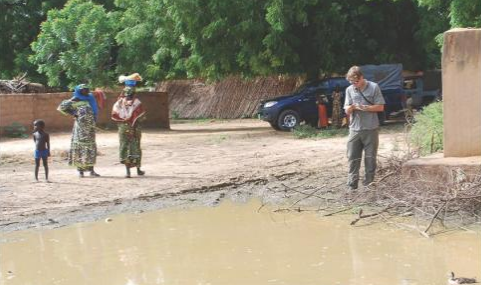Projecting climate change impact on malaria transmission in Africa

For Elfatih Eltahir, malaria symptoms always began the same way: chills that eventually gave way to high fever, a pounding headache, and nausea that persisted until this cycle finally broke days later. First encountered at a young age and again throughout his college years, Eltahir, now a Professor of Civil and Environmental Engineering at MIT, only had about two weeks until symptoms would return to sideline him again.
“This pattern became my norm to the extent that I stopped checking with doctors first, and often chose to go directly to the nearest lab to check for evidence of malaria in my blood,” says Eltahir. “From there, I would stop by a pharmacy to buy chloroquine injections and bring them home to my sister who is a doctor, to ask her for help performing the injections.”
Growing up in Africa and attending university in Khartoum, capital of Sudan, malaria was a shadow that loomed large over everyday life like most cities in that region. This formative early life experience ultimately shaped Eltahir’s decision to study the environmental determinants of malaria for much of his career. In his new book, Projecting the Impacts of Climate Change on Malaria Transmission in Africa, Eltahir combines his personal experience contracting and treating the disease with his work, using it as an example to better understand the nexus of climate change, health, and poverty in Africa.
“Using rigorous field research and advanced disease transmission modeling, we were able to understand how climate change will impact this disease, which is one of the major public health challenges in Africa, and we were able to identify which regions of the continent are going to be more impacted by the hazards from increased transmission of malaria,” says Eltahir. “When you think of disease impact, you have to think socioeconomic status too – poverty.”
The book, coauthored by former graduate students in Eltahir’s Research Group: Arne Bomblies, now Assistant Professor of Civil and Environmental Engineering at the University of Vermont, and Teresa K. Yamana, an associate research scientist at Columbia University, and Noriko Endo, Product Manager at Biobot Analytics, summarizes the results of their research, representing the culmination of nearly two decades of work. Mosquitoes carrying malaria thrive in wet, warm temperature that is not too hot. Using custom made computer models, Eltahir’s group predicted that in Western Africa, climate change may keep environmental potential for malaria transmission the same or slightly hurt mosquito populations as temperatures rise. But in parts of Eastern Africa where the climate is more temperate, impacts of climate change could lead to a rise in the ideal conditions for mosquitoes carrying the disease.
“Bands of warmer temperature are likely to creep up into the highlands of Ethiopia, pushing it into the sweet spot for mosquito breeding,” says Eltahir, who predicts that low-income residents of the area will be disproportionately affected by the disease. “Now, when people think of the main challenge of our times, which is climate change, there is more interest in the nexus of climate change, health and poverty. This is a big topic now, but something we started looking at fifteen years ago.”
For Eltahir, it is important not only for scientists to talk about the global effects of climate change, but also to illustrate how people will see those changes occur at regional and local scales, and most importantly, what concrete steps can be taken to mitigate the harmful effects of climate change.
“The main reason for writing this book, and doing the research, is to inform society of these impacts, and hopefully that would motivate effective adaption policies to climate change.”
Share on Bluesky


